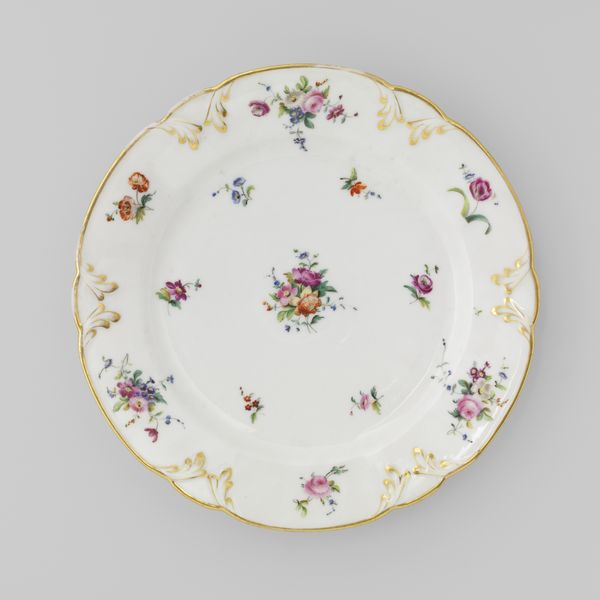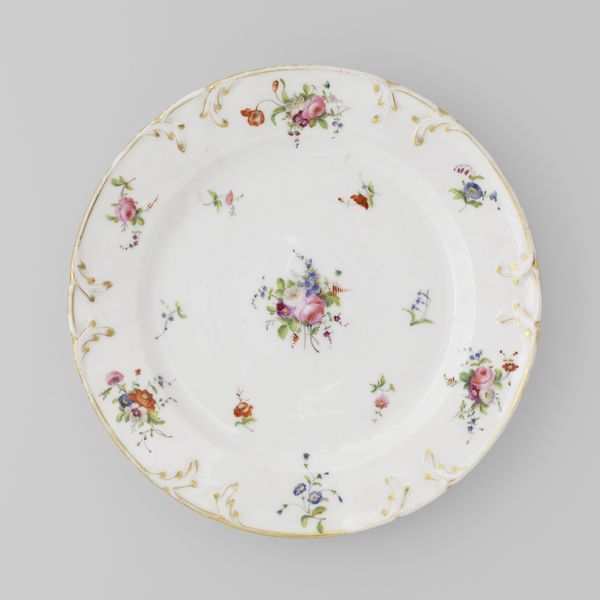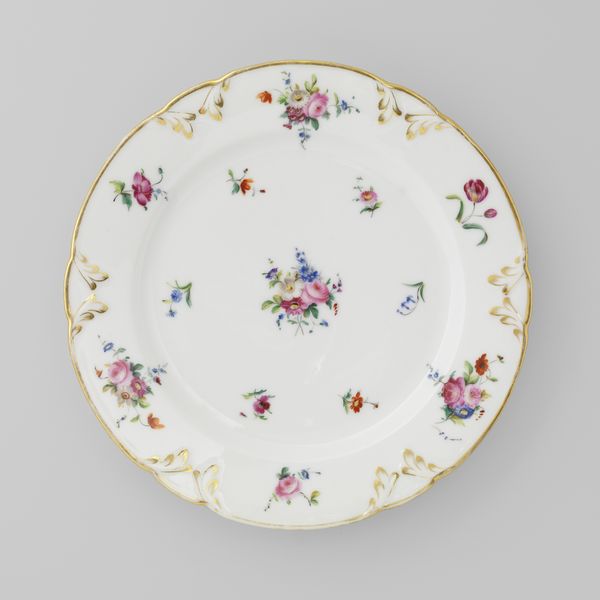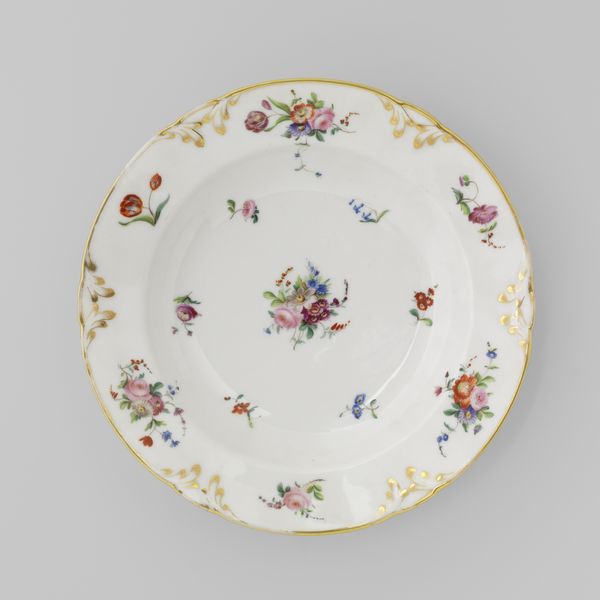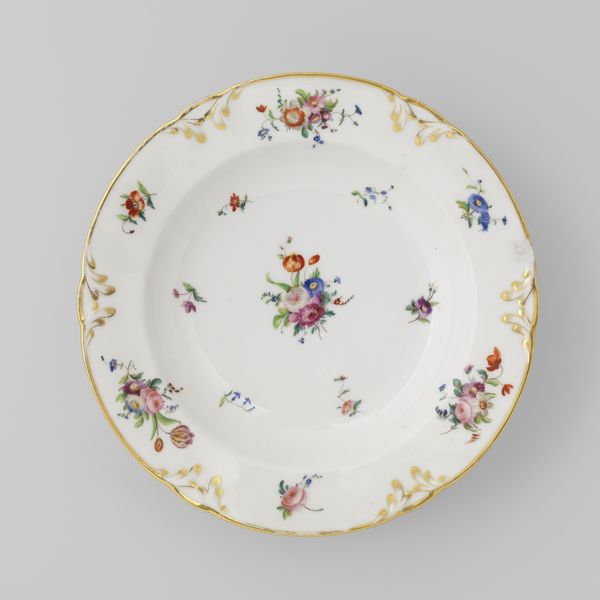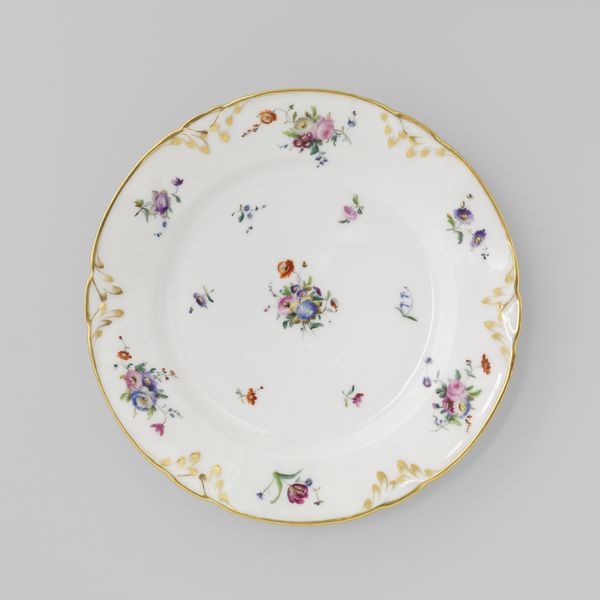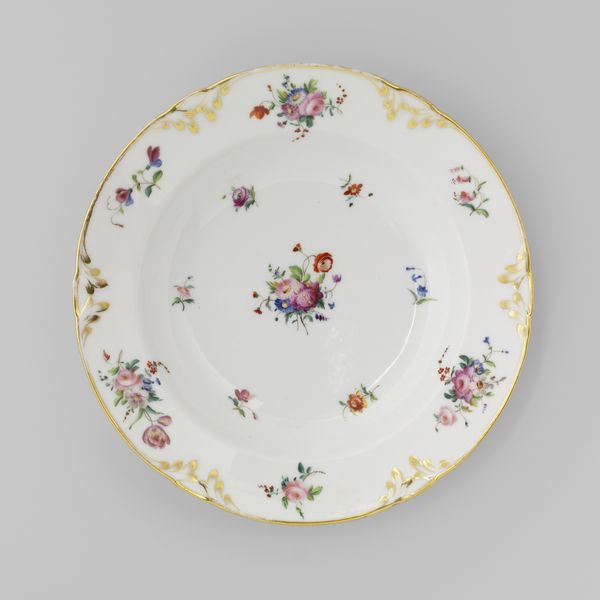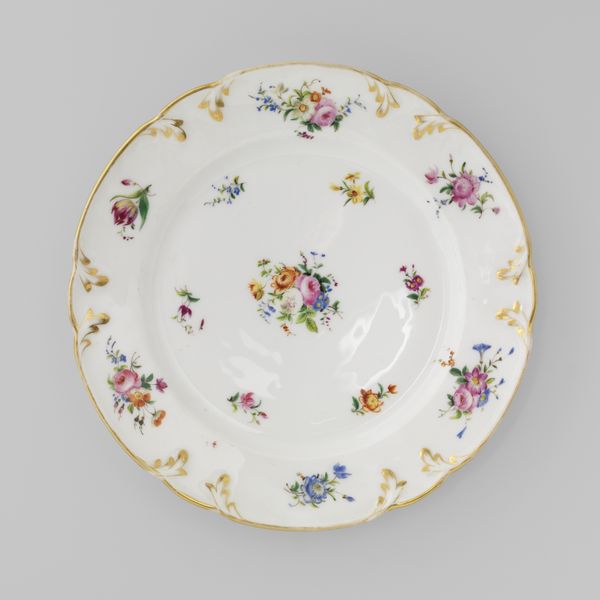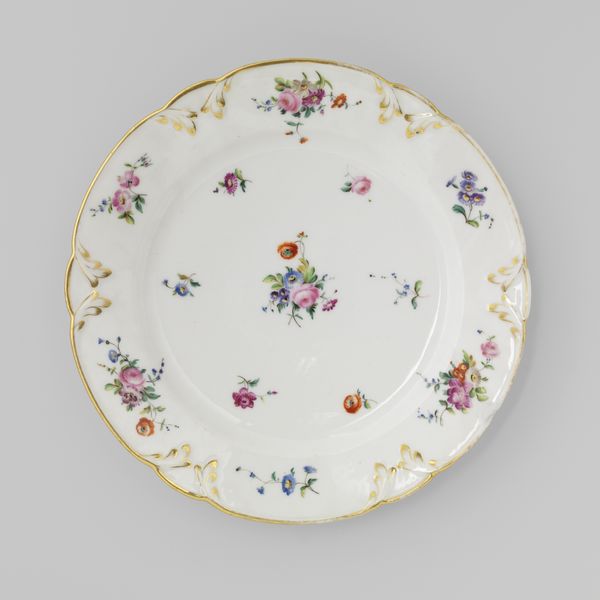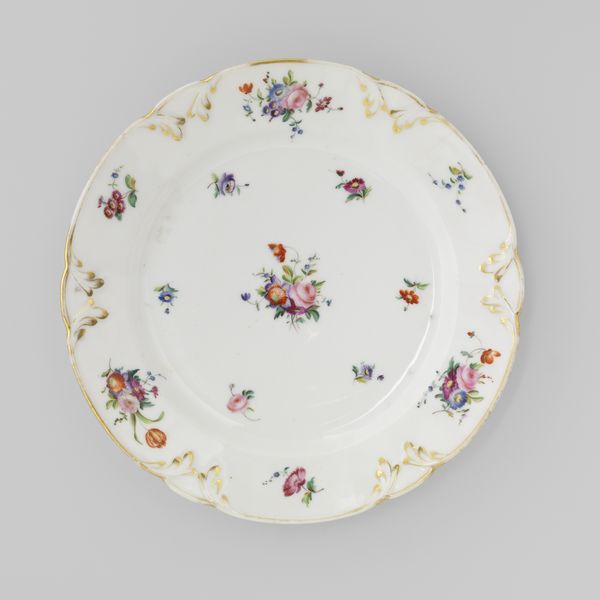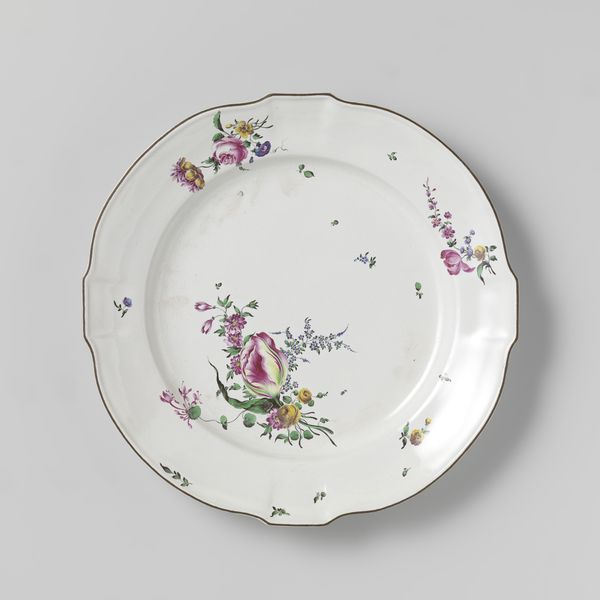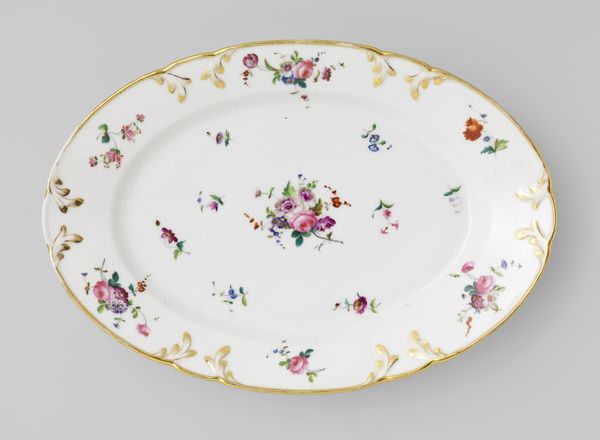
painting
#
product photograph merchandise
#
product studio photography
#
circular oval feature
#
painting
#
product promotion photography
#
cake food
#
round design
#
retro 'vintage design
#
culinary art
#
food illustration
#
romanticism
#
genre-painting
#
food photography
#
decorative-art
Dimensions: height 2.7 cm, diameter 22.7 cm, diameter 14.6 cm
Copyright: Rijks Museum: Open Domain
Curator: Here we have a plate from around 1839, created at the Dominique Denuelle Factory. The title is "Plate with bouquets and flower sprays." It's currently held at the Rijksmuseum. Editor: It feels very delicate. The floral decorations scattered across the white surface have a certain lightness, almost like they’re floating. Curator: Absolutely. These decorative plates speak volumes about the era’s fascination with ornamentation and refinement. The Dominique Denuelle Factory was quite popular during that time, and this piece reflects the growing market for luxury porcelain among the bourgeoisie. Editor: It’s interesting to consider this object beyond just its visual appeal. The materiality itself – porcelain meticulously painted – tells a story about labor. How many hands touched this piece before it reached its final form? Curator: That's a fantastic point. Consider also the social context of displaying such an item. This wasn’t just about eating; it was about showcasing wealth and status through the careful consumption of artisanal goods. Editor: Exactly. The act of collecting these pieces isn't just for utility but social display. You see how it blurs the boundaries between functionality, craft, and artistry, making you think about the kind of lifestyle it represents. Curator: You know, viewing these plates is also interesting considering the art market now. Plates and pieces such as these are considered works of art now, showcased behind glass in places like the Rijksmuseum. That elevation of something that was utilitarian shows how perceptions change through time. Editor: And those flowers aren't just pretty—they are indicative of floral imagery's presence in all aspects of culture. It is also important to appreciate the level of craft—each flower painstakingly placed on porcelain by human hands. Curator: Agreed, and thanks for directing our focus back to the labor that crafted these pieces! Editor: Definitely. Looking at objects like this prompts reflection on the layers of artistry, labour, and even socio-economics at play in everyday decorative items. Curator: Yes, from its craftsmanship to the statement it made about taste and societal status in 1839, a plate like this contains more than one might think.
Comments
No comments
Be the first to comment and join the conversation on the ultimate creative platform.
